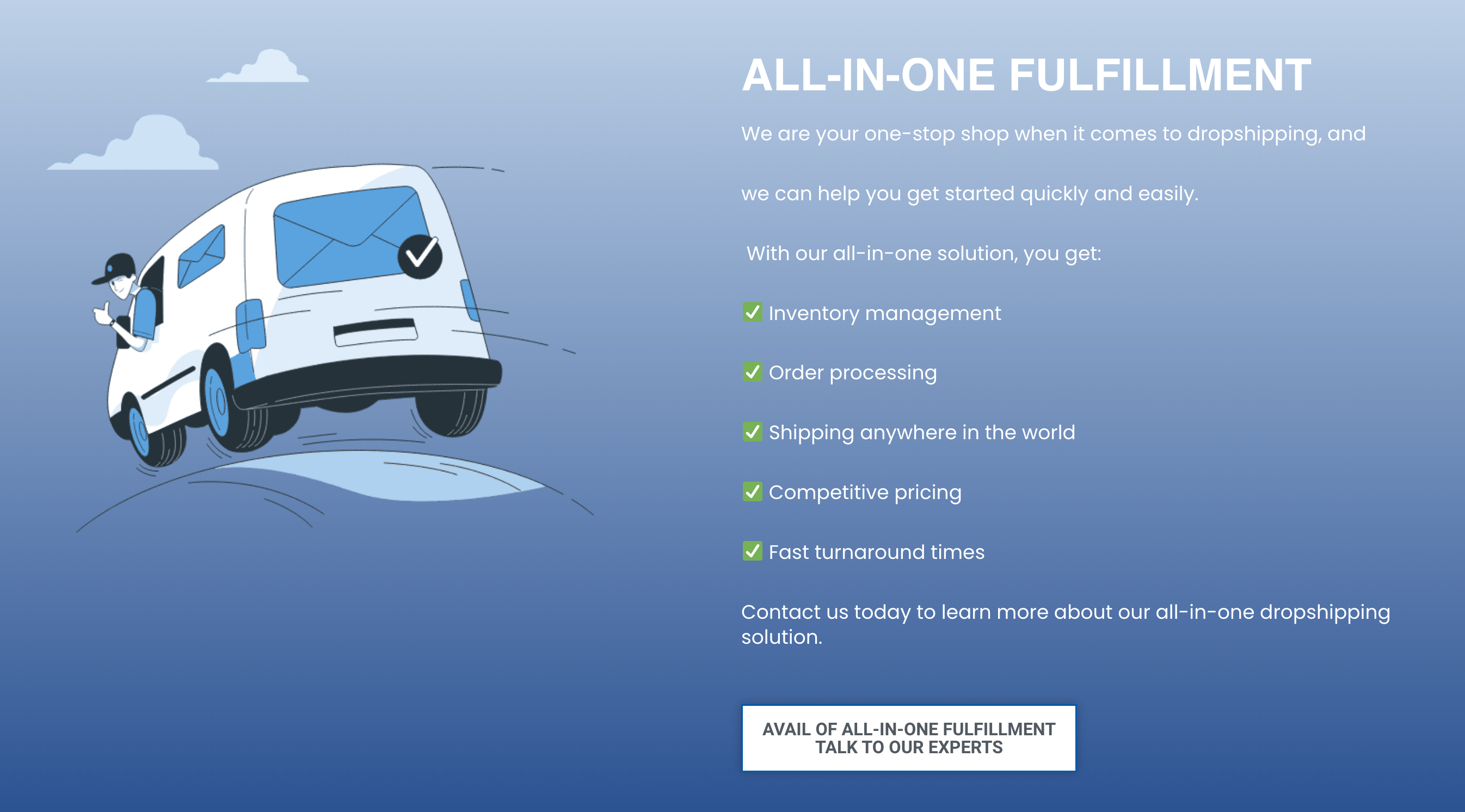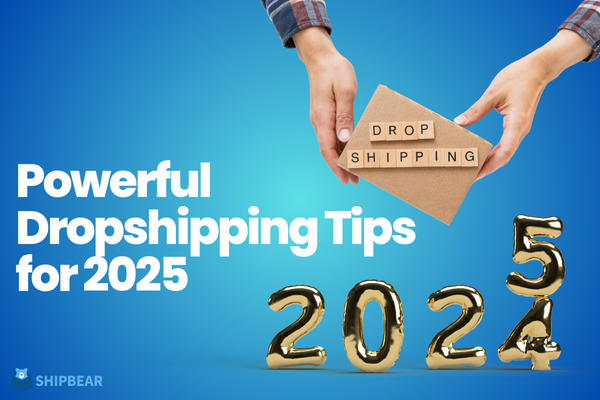As we move into 2025, the dropshipping landscape continues to evolve. With advancements in technology, shifts in consumer behavior, and increased competition, it’s crucial for aspiring entrepreneurs to stay ahead of the curve. Here’s some essential advice to help you thrive in the dropshipping 2025 business this year.

Tips for Dropshipping 2025:
1. Embrace Automation and AI
Automation tools and AI are transforming how businesses operate, making processes more efficient and reducing overhead costs. Here are some ways to leverage automation in your dropshipping business:
- Inventory Management: Use automated inventory management systems to track stock levels in real time. This prevents overselling and helps you manage your suppliers effectively. Tools like Oberlo and Spocket can integrate with your store to keep inventory updated automatically.
- Order Processing: Automate order processing to reduce the time between purchase and fulfillment. Many platforms offer automatic order routing to your suppliers, ensuring that orders are processed without manual intervention.
- Customer Service: Implement AI-driven chatbots to handle common customer inquiries and support requests. These bots can provide 24/7 assistance, answering questions about order status, return policies, and product information, which enhances customer satisfaction.
- Email Marketing Automation: Utilize email marketing tools to automate follow-ups, abandoned cart reminders, and personalized promotions. This targeted approach can significantly increase conversion rates and customer retention.
2. Focus on Niche Markets
In 2025, competition will be fiercer than ever, making it essential to carve out a niche for your business. Here’s how to effectively identify and target niche markets:
- Market Research: Conduct thorough market research to identify gaps in the market. Use tools like Google Trends, social media insights, and keyword research to discover what products are trending and which audiences are underserved.
- Target Audience: Define your target audience based on demographics, interests, and buying behavior. Create detailed customer personas to tailor your marketing strategies and product offerings to their specific needs.
- Unique Value Proposition (UVP): Develop a compelling UVP that sets your brand apart from competitors. Highlight what makes your products unique—whether it’s quality, sustainability, or a specific feature.
- Community Engagement: Build a community around your niche by engaging with customers through social media, forums, and content marketing. Share valuable information and foster relationships to establish trust and loyalty.
3. Prioritize Customer Experience
Providing an exceptional customer experience is vital for standing out in a crowded marketplace. Here are key areas to focus on:
- User-Friendly Website Design: Ensure your website is visually appealing and easy to navigate. Optimize the layout and design for a seamless shopping experience, with clear calls to action and an intuitive checkout process.
- Personalization: Use data analytics to personalize the shopping experience. Recommend products based on browsing history, purchase behavior, and preferences to enhance relevance and increase sales.
- Responsive Customer Support: Offer multiple channels for customer support, including live chat, email, and phone. Ensure your team is trained to provide quick and efficient resolutions to inquiries and issues.
- Feedback Mechanisms: Implement tools to gather customer feedback, such as surveys and reviews. Act on this feedback to continuously improve your products and services, showing customers that their opinions matter.
4. Optimize for Mobile
With mobile shopping on the rise, optimizing your website for mobile users is crucial. Here’s how to ensure a seamless mobile experience:
- Responsive Design: Use a responsive website design that adapts to different screen sizes. This ensures that users on smartphones and tablets have a consistent experience, regardless of device.
- Fast Loading Speeds: Optimize images and streamline code to improve loading times. Slow websites lead to high bounce rates, so aim for loading times of three seconds or less.
- Mobile-Friendly Checkout: Simplify the checkout process for mobile users. Offer guest checkout options, minimize form fields, and integrate mobile payment solutions like Apple Pay and Google Pay for convenience.
- App Development: Consider developing a mobile app if your business scales significantly. An app can enhance user engagement, provide push notifications for promotions, and offer a more personalized shopping experience.
5. Leverage Social Media and Influencer Marketing
Social media remains a powerful tool for reaching potential customers. Here are effective strategies for leveraging these platforms:
- Content Creation: Share engaging content, such as product demonstrations, user-generated content, and behind-the-scenes looks at your brand. Creative and relatable content can drive engagement and foster a community around your brand.
- Platform Selection: Focus on the social media platforms where your target audience is most active. For example, Instagram and TikTok are popular for visual content, while Facebook may be better for community engagement.
- Influencer Partnerships: Collaborate with influencers who resonate with your brand values. Choose influencers whose audiences align with your target market to maximize the effectiveness of your campaigns.
- Paid Advertising: Invest in targeted social media advertising to reach broader audiences. Use precise targeting options to ensure your ads are shown to users who are most likely to convert.
6. Stay Informed About Market Trends
Staying ahead of market trends is essential for maintaining competitiveness. Here are ways to keep your finger on the pulse:
- Adaptability: Be ready to pivot your strategies based on market changes. Flexibility and adaptability are crucial in responding to new trends and consumer demands effectively.
- Regular Research: Allocate time each week to research industry trends, competitor strategies, and consumer behavior. Use platforms like Statista, eMarketer, and industry blogs to gather insights.
- Networking: Join dropshipping forums, attend webinars, and participate in industry conferences. Networking with other entrepreneurs can provide valuable insights and opportunities for collaboration.
- Analytics Tools: Utilize analytics tools to track your website performance and customer behavior. Google Analytics, for example, can help you understand traffic sources, user engagement, and conversion rates.
7. Enhance Your Shipping Strategy
Fast and reliable shipping is crucial in today’s e-commerce environment. Choosing the right shipping agent can significantly impact your business’s success. Here’s how to select the best shipping agent for your dropshipping operations, with a focus on services like ShipBear.
Why Shipping Matters
- Customer Expectations: Today’s consumers expect fast and reliable delivery. Meeting these expectations can lead to higher customer satisfaction and repeat business.
- Cost Efficiency: Shipping costs can eat into your profits. A strategic partnership with the right shipping agent can help minimize these costs while maintaining service quality.
- Brand Reputation: The shipping experience contributes to your overall brand image. Delays or mishaps can tarnish your reputation, while smooth deliveries can enhance it.
Choosing the Right Shipping Agent
When selecting a shipping agent, consider the following factors:
- Reliability: Look for a shipping partner with a proven track record of timely deliveries. Research reviews and testimonials to gauge their reliability.
- Global Reach: If you plan to sell internationally, ensure your shipping agent can handle global logistics. ShipBear, for instance, offers extensive shipping networks, allowing you to reach customers worldwide.
- Flexible Options: Your shipping agent should provide various shipping methods, from express to standard delivery. This flexibility allows you to cater to different customer preferences while managing costs effectively.
- User-Friendly Platform: A shipping agent like ShipBear features an intuitive interface that simplifies order management, tracking, and performance analysis. This ease of use can save you time and reduce operational headaches.
- Transparent Pricing: Choose a shipping agent that offers clear pricing structures without hidden fees. ShipBear is known for its transparent pricing, helping you budget more effectively.
- Excellent Customer Support: Responsive customer support is essential for resolving any shipping-related issues quickly. ShipBear’s support team is well-regarded for their helpfulness and expertise.
- Sustainability Initiatives: As consumers become increasingly environmentally conscious, partnering with a shipping agent that prioritizes sustainability can enhance your brand reputation.
Conclusion
In 2025, enhancing your shipping strategy is vital for dropshipping success. By choosing a reliable shipping agent like ShipBear, you can ensure fast and efficient delivery, improve customer satisfaction, and ultimately drive growth for your business. Focus on selecting a partner that aligns with your business goals, and watch your dropshipping venture thrive in the competitive e-commerce landscape.




